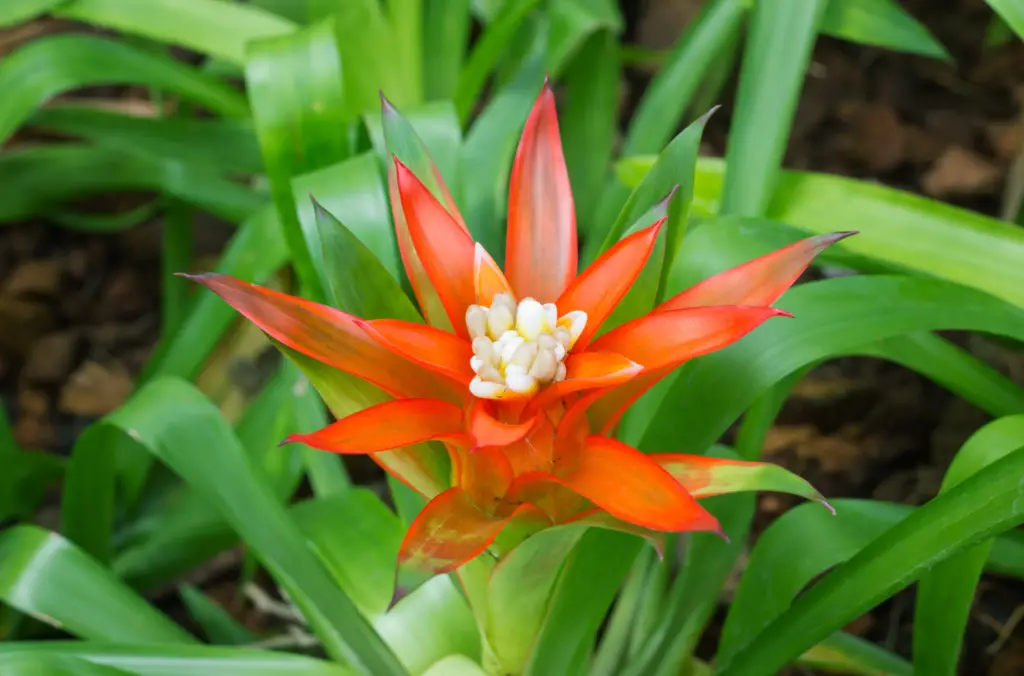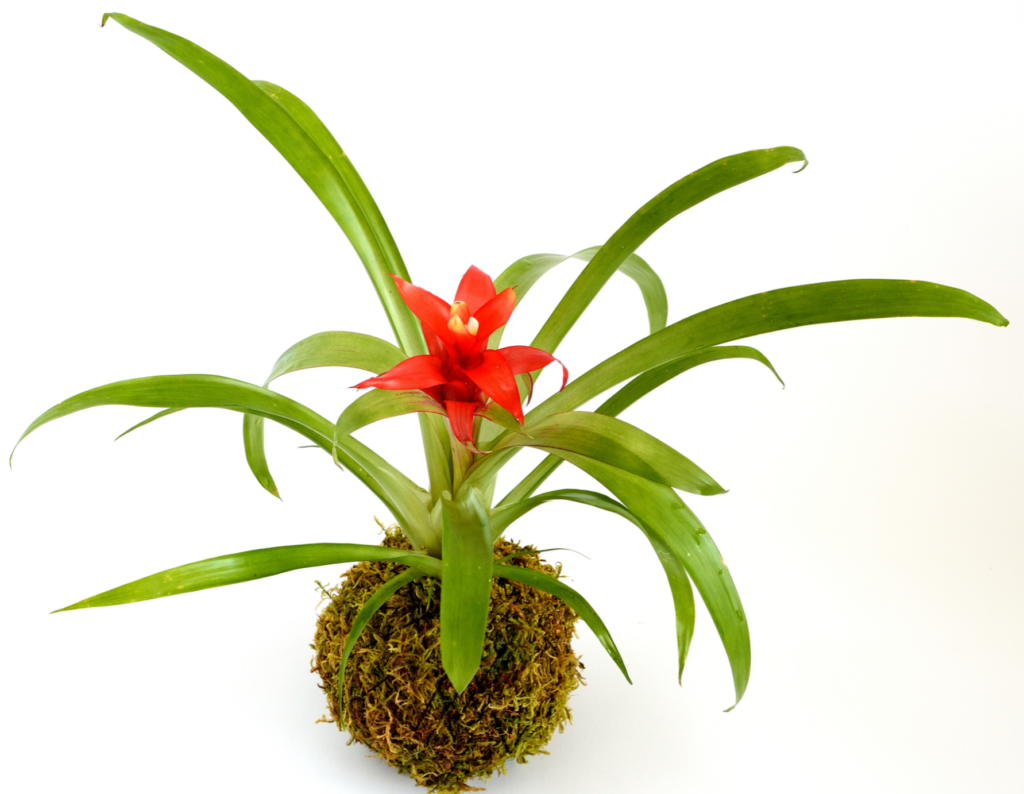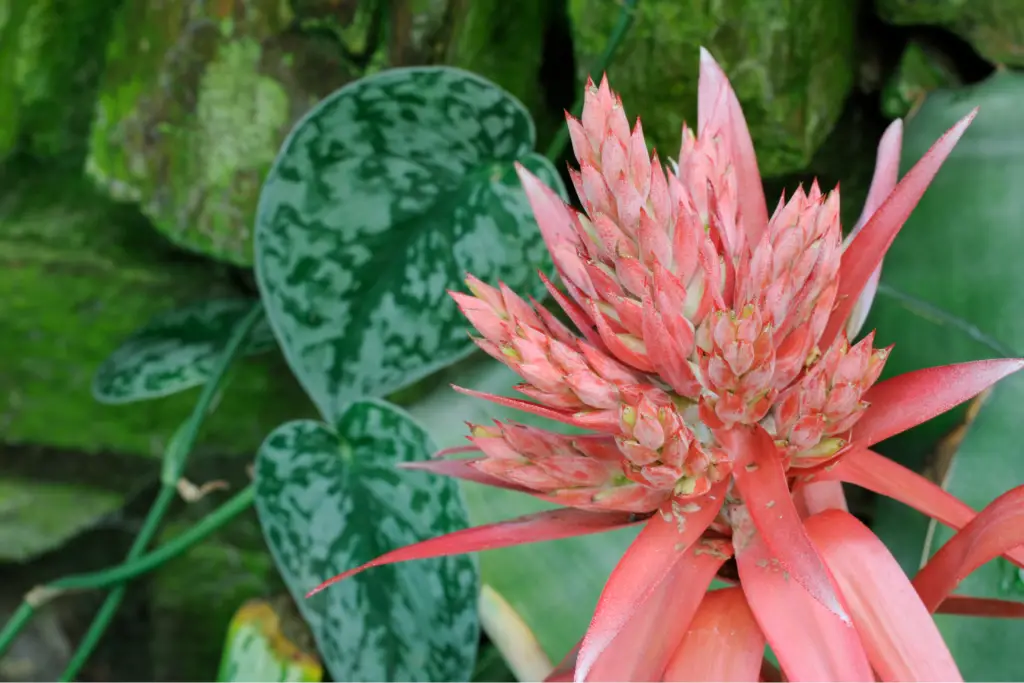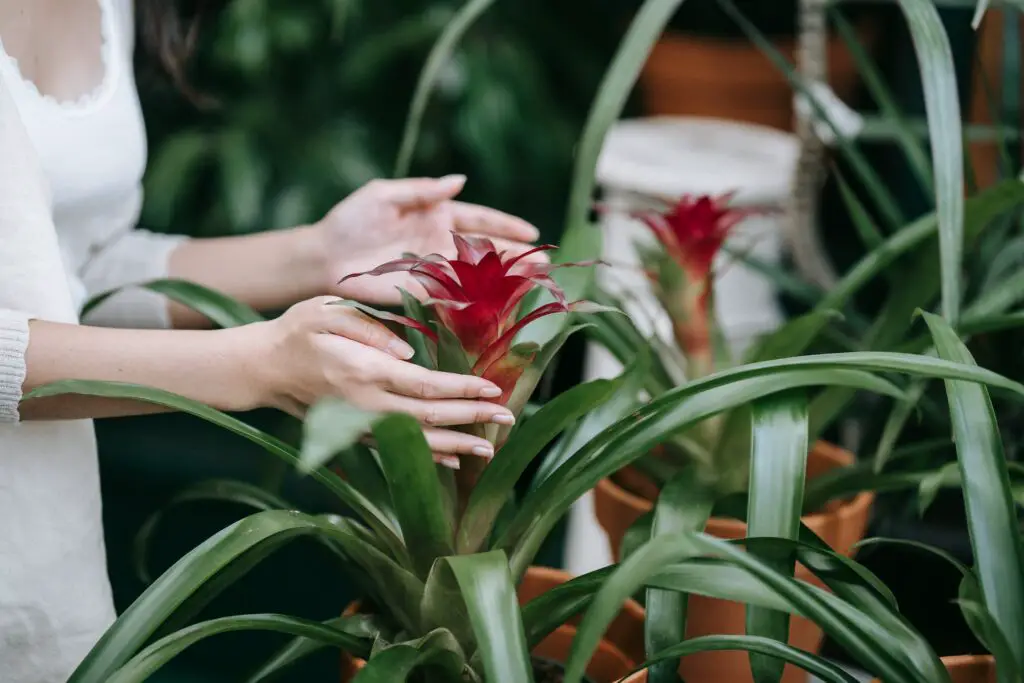Bromeliads are fascinating plants that have gained popularity as houseplants in recent years. These tropical beauties come in a variety of shapes, sizes, and colours. They perfect for adding a touch of exoticism to any home decor. In this article, we will explore the world of bromeliads and how to care for them as indoor plants.
Table of Contents
What are Bromeliads?
Bromeliads are a family of plants with over 3,000 species. They are native to Central and South America, but they can also be found in the Caribbean, Florida, and some parts of Africa. Bromeliads are best known for their unique rosette shape and their brightly coloured leaves and flowers. Their leaves can be smooth or textured, and they range in color from green to red to pink to purple. The flowers of bromeliads are often showy and long-lasting, and come in a range of colours.
Bromeliads are epiphytic plants, meaning that they grow on other plants or objects. They however do not rely on them for nutrients. They have a specialised structure called a tank, which is formed by the tightly packed leaves at the center of the rosette. The tank collects water and nutrients, and provides a habitat for small animals like frogs, insects, and even small mammals. Bromeliads also have a unique way of absorbing water and nutrients through their leaves. It makes them well-suited to growing in areas with limited access to soil.
Types of Bromeliads
There are several different types of bromeliads, each with their own unique characteristics. Some of the most popular types of bromeliads for indoor growing include:
- Aechmea: Aechmea is a genus of bromeliads that includes over 250 species. These plants have a distinctive shape, with long, narrow leaves that form a rosette. The flowers of Aechmea are usually pink, red, or purple, and they grow on a tall spike that rises above the rosette.
- Guzmania: Guzmania is a genus of bromeliads that includes over 150 species. These plants have broad, flat leaves that form a rosette. The flowers of Guzmania are usually bright red, orange, or yellow, and they grow on a stalk that rises above the rosette.
- Neoregelia: Neoregelia is a genus of bromeliads that includes over 100 species. These plants have a rosette of leaves that form a cup-shaped center, which is often brightly colored. The flowers of Neoregelia are usually small and inconspicuous, but the foliage is the main attraction.
- Tillandsia: Tillandsia is a genus of bromeliads that includes over 600 species. These plants are often called air plants because they grow without soil and do not require a pot. Instead, they can be mounted on a piece of driftwood, a rock, or any other object. Tillandsia has narrow leaves and produces small, inconspicuous flowers.



Caring for Bromeliads
Bromeliads are relatively easy to care for as houseplants, but they do require some specific conditions to thrive. Here are some tips for caring for bromeliads:
Light
Bromeliads prefer bright, indirect light. They can tolerate some direct sunlight, but too much can burn their leaves. If your bromeliad is not getting enough light, the leaves will become pale and yellow. If they are getting too much light, the leaves will become brown and scorched.
Water
Bromeliads have a tank at the center of their rosette that collects water, so it’s important not to overwater them. The best way to water a bromeliad is to pour water into the tank at the center of the rosette. Also do not fill the tank to its brim. Alternatively, you can water the soil around the base of the plant. In general, bromeliads prefer to be slightly dry between waterings, so it’s better to underwater than to overwater them.
Humidity
Bromeliads prefer areas with high humidity, so mist them regularly or place them in a room with high humidity. If the air in your home is dry, place a tray of water near the plant to increase the humidity.
Temperature
Bromeliads prefer warm temperatures, ideally between 60°F to 80°F (15.5°C to 26.7°C). They can tolerate cooler temperatures for short periods of time, but they are not frost-tolerant.
Fertilisation
Bromeliads do not require lots of fertilisation, but they will benefit from a monthly dose of a balanced, water-soluble fertiliser. Dilute the fertiliser according to the instructions on the package, and do not apply it to the leaves.
Soil and repotting
Bromeliads do not require traditional potting soil, as they do not rely on soil for nutrients. They can be planted in a mix of orchid bark, perlite, and peat moss. You can also use a potting mix specifically designed for bromeliads.
Bromeliads do not need to be repotted often, as they grow slowly. When you do repot, be sure to use a pot that is only slightly larger than the current one, as bromeliads prefer to be slightly root-bound. Be careful not to damage the plant’s roots when removing it from its current pot.
Propagation
Bromeliads can be propagated by offsets, which are small plants that grow at the base of the parent plant. When the offsets are large enough, they can be gently separated from the parent plant and planted in their own pot. Wait until the offset has developed roots of its own before separating it from the parent plant, as this will increase its chances of survival.
Another way to propagate bromeliads is by collecting their seeds. This method is more challenging and requires more patience, as bromeliad seeds can take several months to germinate. Once the seeds have germinated, the resulting plants will take several years to mature.
Common Problems
Bromeliads are relatively easy to care for, but they can be susceptible to a few common problems. Here are some of the issues you may encounter when growing bromeliads:
- Overwatering: Bromeliads are sensitive to overwatering, as their roots can rot if they are sitting in water for too long. Be sure to allow the soil or tank to dry out slightly between waterings, and do not let the plant sit in standing water.
- Pests: Bromeliads can be susceptible to mealybugs, scale insects, and spider mites. If you notice any signs of pests, such as small white or brown spots on the leaves, you can treat the plant with a mild insecticidal soap.
- Browning or yellowing leaves: If the leaves of your bromeliad are turning brown or yellow, it may be a sign of overwatering, underwatering, or too much direct sunlight. Adjust your care routine accordingly to address the issue.
- Faded or shriveled flowers: Bromeliad flowers can last for several weeks to several months, depending on the species, but eventually, they will begin to fade and shrivel. This is a normal part of the plant’s life cycle, and there’s no need to be concerned. Simply trim the dead flower stalk off at the base of the plant.
- Failure to bloom: If your bromeliad isn’t blooming, it may be due to a lack of light or maturity. Bromeliads typically don’t bloom until they are several years old, and they require bright, indirect light to trigger flowering. If you’ve had your plant for a while and it still isn’t blooming, try moving it to a brighter location.
Conclusion
Bromeliads are fascinating and easy-to-care-for houseplants that can add a touch of exotic beauty to any home. With their striking foliage and colourful blooms, they are sure to catch the eye and add interest to any room. Whether you’re a seasoned houseplant enthusiast or a beginner looking to add some greenery to your home, bromeliads are an excellent choice. With proper care and attention, your bromeliad can thrive for years to come, delighting you with its unique beauty and fascinating growth habits.


